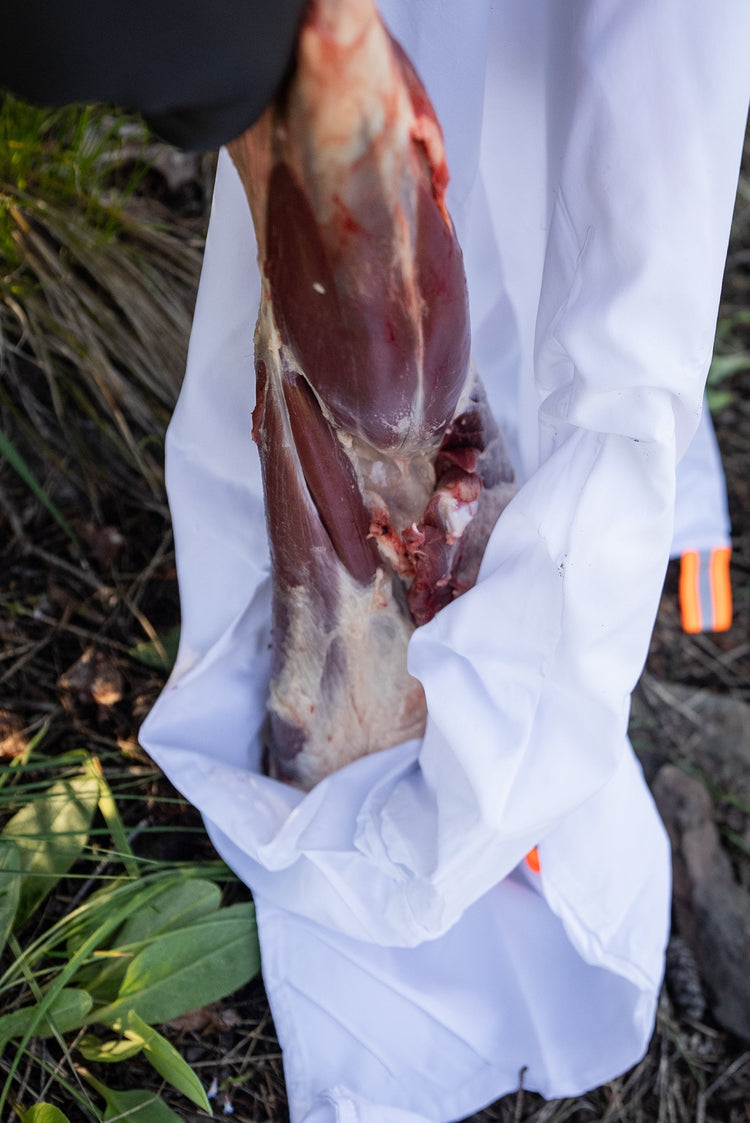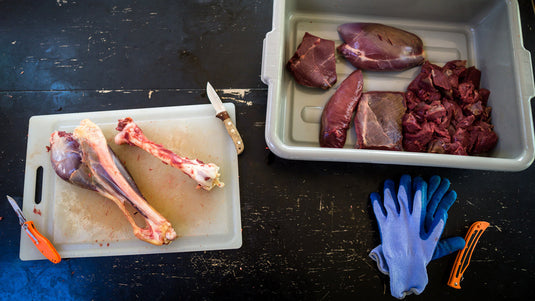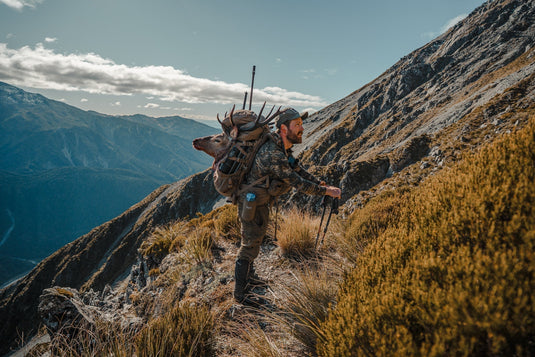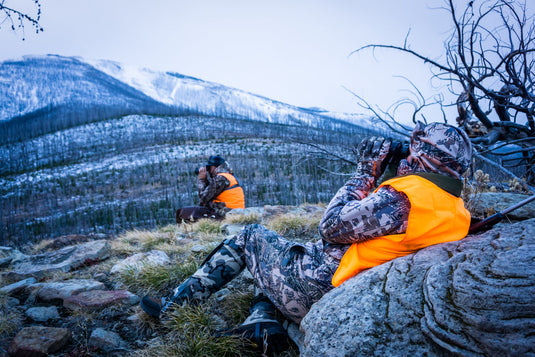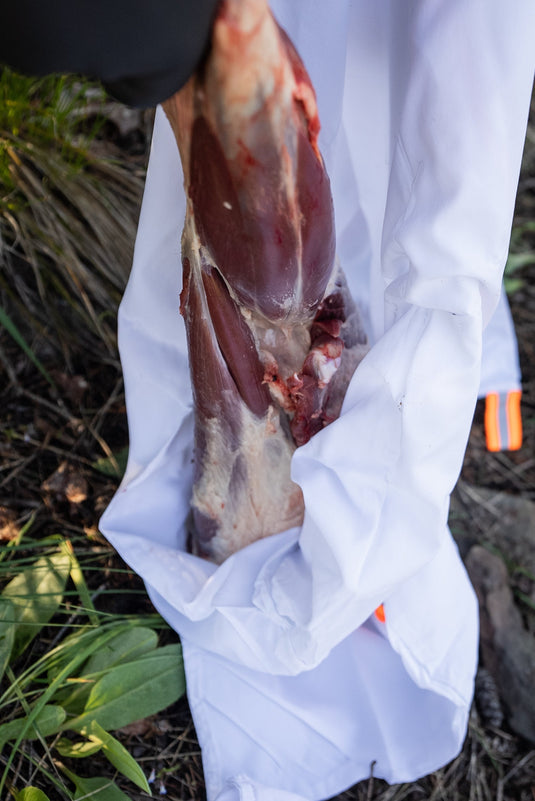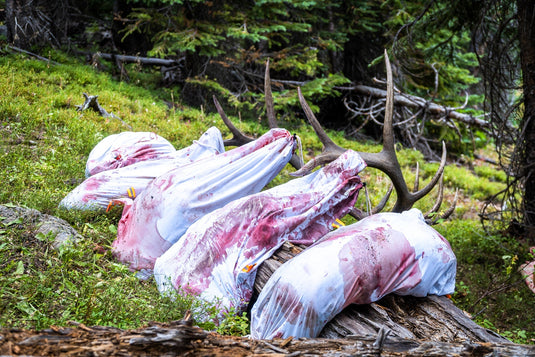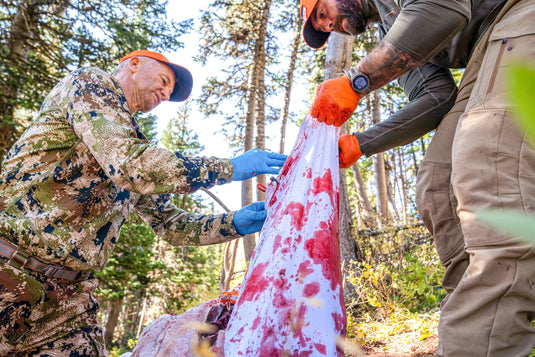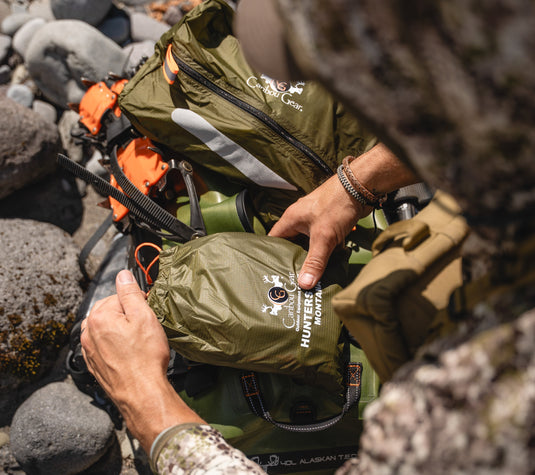Late-Season Elk Meat Care: The Freeze–Thaw Playbook for Second & Third Rifle
The snow began as a rumor on the wind—dry flakes ticked against the hood, timber went quiet, and the ridge took back its secrets. When the bull folded, the work started. In late season, the animal deserves your best operational execution: clean cuts, fast cooling, and a pack-out that doesn’t leave quality to chance. Freeze–thaw can be the silent spoiler in October and November, turning victory into attrition if you don’t manage airflow, elevation, and moisture from the very first touch.
This is your end-to-end playbook for second and third rifle: a narrative-driven field brief that translates into actionable standard operating procedures (SOP). The objective is simple—maximize meat quality. The strategy is cleaner still—control the variables you can (air, contact, moisture, temperature), and bring the right tools to operationalize discipline when the weather turns.
Why Freeze–Thaw Is the Late-Season Risk You Can’t Ignore
Cold weather lulls hunters into complacency. It shouldn’t. Daytime sunshine on snow can drive temps just high enough to wet the surface of quarters, only to refreeze after sunset. That oscillation degrades texture, disrupts the protective crust, and invites avoidable risk. The mission-critical truth: cold is not a strategy—airflow is. You win by hanging early, spacing aggressively, and eliminating contact points that trap heat and moisture.
Establish a Sterile Work Surface: Control the First Minute
Operational excellence begins the instant you reach the downed elk. Late-season snow looks clean but carries debris and moisture into your process. Deploy a dedicated, highly visible prep platform that keeps hair, dirt, and slush away from the meat and doubles as a pack liner on exfil.
- Hunter’s Tarp – Colorado (5′×4′): Compact, purpose-built to create a clean workspace and then serve as a liner to keep blood off your pack during the haul.
- Hunter’s Tarp – Montana (7′×8′): Scales your workstation for larger crews or extended debone sessions while adding tie-outs and attachment points without weight penalties.
Bag Strategy: Match the System to the Mission
Late-season elk hunts call for a flexible game-bag architecture aligned to topography, distance, and team size. You’re either running bone-in quarters for structural integrity on steep terrain or boning out to reduce mass and improve heat dissipation on long mileage. Caribou Gear’s portfolio is engineered to make that decision point low-risk.
- The Carnivore – Boned-Out Game Bags: Optimized for high-mileage egress where trimming mass wins. Breathable fabric supports crust formation while keeping debris and insects off.
- Magnum Pack Series (Elk): Larger cut-plan capacity and engineered breathing room for meat-on-bone work; built for consecutive-day hunts where airflow and handling efficiency are non-negotiable.
- Single Quarter Game Bags: Replace a lost bag, right-size your kit, or build a bespoke system by species and terrain; reusable and breathable.
- High Country Series: Ultralight, species-specific options when your hunt profile demands the lowest possible carry weight without compromising airflow.
Pro Principle: Logos or extra overlays can impede micro-venting. Caribou Gear® materials and construction emphasize airflow and clean closures to maintain that protective surface on your meat.
SOP in the Snow: A Clean, Repeatable Workflow
- Site Selection: Move into shade immediately. Elevate the carcass side you’re working on to reduce contact with snow and debris. If you can’t find natural shade, create thermal breaks with your tarp and packs.
- Skin to Vent: Open along the backline and legs, peel methodically, and free the first quarter. The faster you remove insulating layers, the faster the heat leaves on your terms.
- Bag & Hang: As soon as a quarter is clear, move it into the right-sized game bag, cinch, tag, and hang. Maintain separation between quarters—contact points trap heat and moisture.
- Trim Segregation: Backstraps, tenderloins, and trim go to a dedicated boned-out bag for accountability and airflow.
- Record Temps: Validate the cooling curve with a pocket probe thermometer and target a sub-40°F core as you progress.
- Staging: If multi-trip logistics are required, stage in shaded airflow. Use downed logs, trekking poles, or cordage to maintain non-contact suspension.
Airflow Is the Product: Hanging, Spacing, and the No-Touch Rule
The late-season differentiator is not the ambient temperature—it’s the microclimate you create around each piece of meat. Hang quarters so each face gets air. Leverage cross-breeze. Avoid tarping your meat unless precipitation actively compromises cleanliness; even then, create a roof, not a wrap. More surface exposure equals faster moisture management and safer crust formation.
Load Architecture: Moving Heavy, Moving Clean
Route planning is your risk-mitigation layer. Select the egress line that protects your knees and back while preserving the integrity of the load. Heavy goes first while your legs are fresh; the team returns for subsequent trips with a stabilized site, hung meat, and documented temps.
For the handoff to the truck and the drive to town, deploy waterproof, field-tough transport that quarantines moisture and odor while staying pliable in extreme cold:
Cooler Strategy: Don’t Let Transport Undo the Fieldwork
- Block Ice Over Cubes: Blocks melt slower and stabilize a colder microclimate; cubes add water quickly and soak bags.
- Air Gap Matters: Elevate bagged meat in the cooler (wood spacers or a perforated rack) so cold air can circulate under and around each bag.
- Vents & Drains: Crack lids in freezing ambient temps to let humidity escape; in warmer conditions, drain meltwater to maintain a dry cold.
- Plastic Is Not Storage: Contractor bags are pack liners only—never seal warm meat in plastic. Keep it breathable; let the game bags do their job.
Second & Third Rifle Scenarios: Decision Trees That Travel
Scenario A: Solo Hunter, 3–5 Miles In, Temps 15–35°F
Approach: Debone to reduce mass and improve cooling surface area.
Kit: The Carnivore; Hunter’s Tarp – Colorado; cordage and lightweight carabiners.
Rationale: Solo mileage favors deboning; breathable bags protect the crust when you’re moving slow and steady.
Scenario B: Two-Hunter Team, 1–2 Miles, Timbered North Slope, Temps 10–28°F
Approach: Bone-in quarters for structural integrity on steep terrain; short carry enables multiple trips.
Kit: Magnum Pack Series (Elk); Single Quarter Bags; Hunter’s Tarp – Montana.
Rationale: Meat-on-bone transports cleanly with dedicated bags sized to the mission; larger tarp footprint improves throughput.
Scenario C: Three-Hunter Team, Front-Country Access, Temps Swinging 25–45°F
Approach: Mixed strategy—front shoulders deboned, hinds left bone-in; staged shuttle to truck.
Kit: High Country Series; Koyukon® Dry Bags; pocket thermometer.
Rationale: Temperature swings demand agility; protect airflow first, then accelerate exfil with staged transport.
Risk Indicators: What “Right” Looks Like (and What Doesn’t)
Green Lights:
- Firm outer crust on quarters or boned-out bags within hours
- Consistent sub-40°F core temps recorded on probe
- No pooling moisture in cooler; dry cold maintained
Red Flags:
- Surface wetness that reappears after a freeze overnight
- Off odors indicating bacterial activity
- Bags darkened by moisture from contact points or compression
The Late-Season Meat Care Checklist (Copy, Print, Pack)
- Work Surface: Hunter’s Tarp – Colorado (5′×4′) or Hunter’s Tarp – Montana (7′×8′)
- Game Bags: The Carnivore – Boned-Out; Magnum Pack Series – Elk; Single Quarter Bags; High Country Series
- Rigging & Tools: Paracord, lightweight carabiners, knife set + sharpener, nitrile gloves, headlamp
- Transport: Koyukon® Waterproof Duffel(s) and Dry Bags staged clean in vehicle
- QC: Pocket thermometer; field notes (time/temp)
Quick-link hub for elk hunters: Game Bags for Elk – Ultralight, Reusable
Ethical Stewardship Is Operational Discipline
Late season is where intent meets outcome. The story isn’t the shot—it’s the system you run afterward. Snow may fall, wind may shift, and terrain may argue, but the fundamentals don’t change: clean work, continuous airflow, smart staging, disciplined transport. Execute that cycle and you’ll deliver high-quality protein to your family and friends while honoring the animal and the hunt.
Build your standardized kit now:
The Carnivore – Boned-Out Game Bags • Magnum Pack Series – Elk • Single Quarter Game Bags • High Country Series • Hunter’s Tarp – Colorado • Hunter’s Tarp – Montana • Koyukon® Waterproof Duffel
